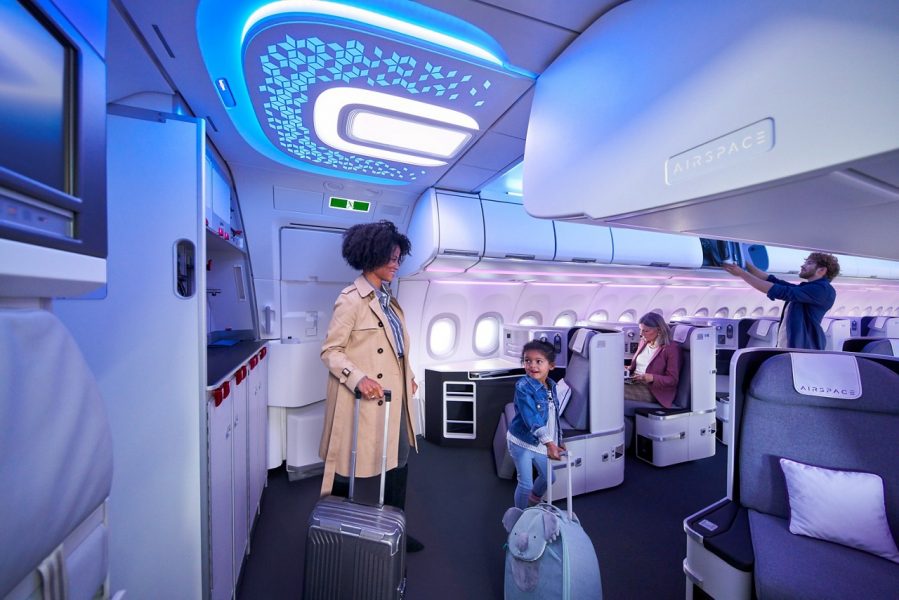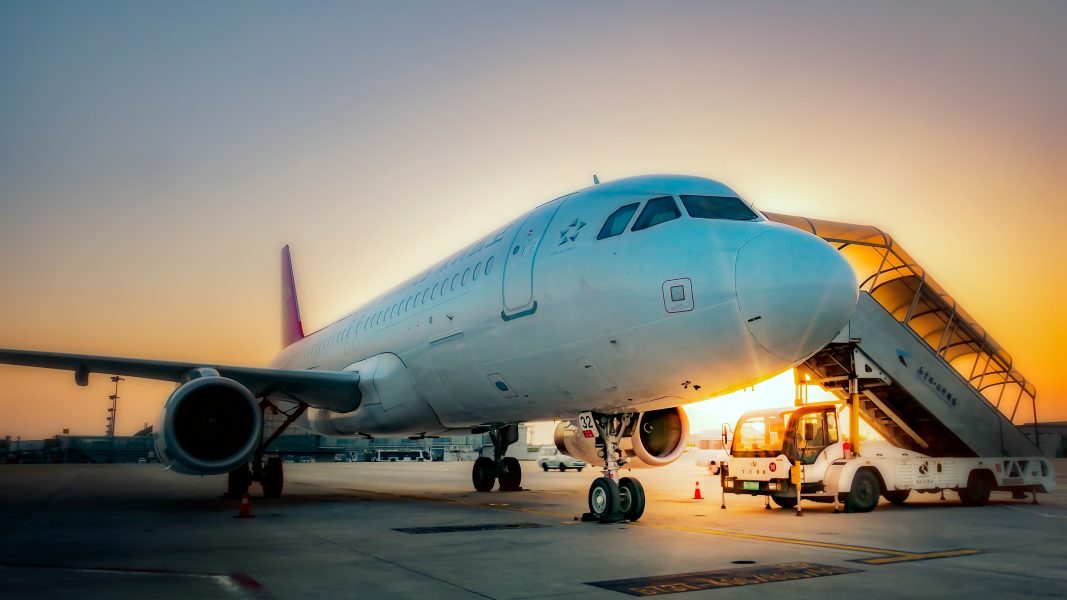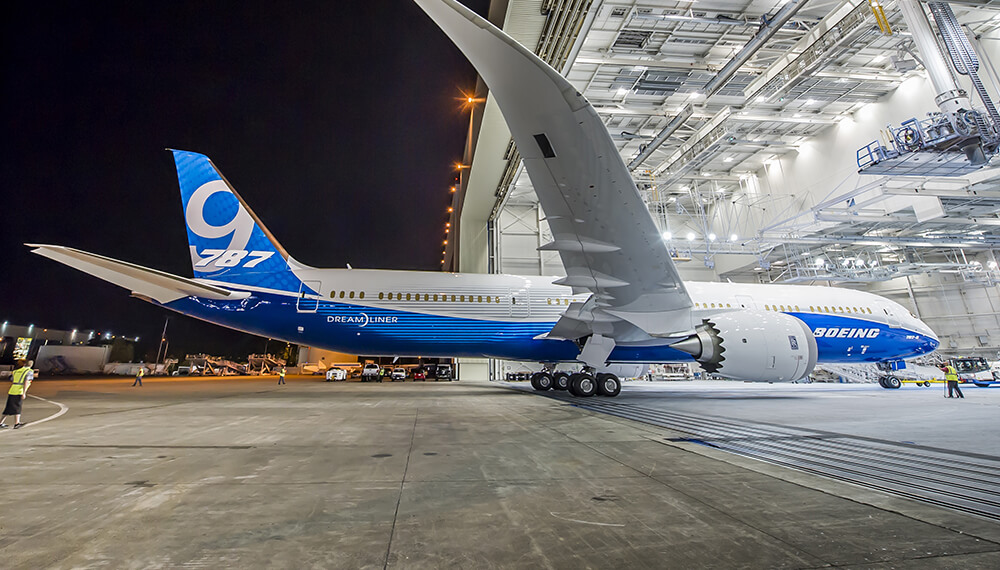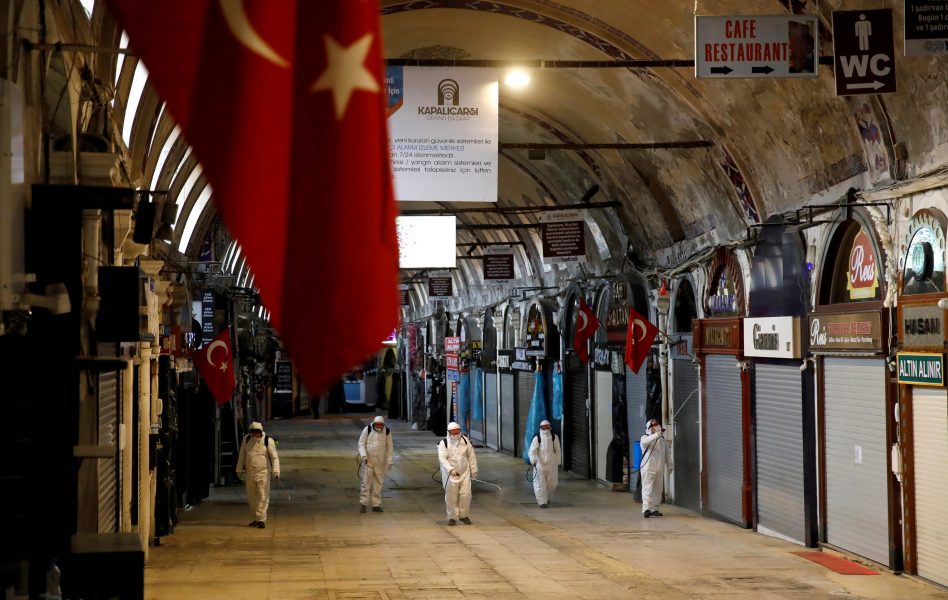When it comes to passenger experience, Airbus has left no stone unturned to make sure guests have the best and unparalleled sense of comfort and safety. The aerospace behemoth had been experimenting with various onboard products in recent months when it came up with the concept of "Airbus Airspace Cabin". Marketing it as " The most valuable space in sky", and truly it is, what exactly is the concept all about?Let's find out.
What is the vision all about?
Inspired by airlines, technology companies from Silicon Valley and start-ups, Airbus has brought to life a future flying experience – the Airspace Cabin Vision 2030.
Initially designed for widebodies and unveiled on the next Gen A350 XWB, the company managed to create quite a stir when it rolled the design for narrowbodies, earlier this year.
A350 AIRBUS AIRSPACE
With several in-flight testing, The A320 Family’s new Airspace cabin took shape during last year’s “full-scale cabin installation test” – when Airbus’ teams performed a trial installation of a fully integrated cabin in an A321neo fuselage.
Sporting futuristic design and state-of-the-art passenger comfort features, the Airspace cabin for the A320 family presents the following:
1.Redesigned entrance area with a customisable "Human Centric Lighting" that illuminates the cabin in a warm red light graduating to colder blue tones with intermediate shades. This results in an ambient setup throughout the flight and also reduces jetlag.
2.New, XL, spacious overhead bins-quite an update from the previous overhead bin configurations for the A320. The huge new overhead bins have a forty percent larger volume and can hold sixty per cent more suitcases, as they can be stowed vertically in the bins.
3.Improvised window bezels allowing more light into the cabin consistent with passengers biorhythm (depending on time of the day)
4.Integrated window shades and new side walls delivering a sleek, customized look while yielding even more shoulder room
5.Lavatories with more touchless features and anti-microbial coatings
6.Customizable ‘hero’ ceiling light with full-colour LED lighting throughout the cabin.
The initial in-flight testing subjected the cabin to conditions well beyond what it would normally be subjected to in a standard flight profile. Special cameras and sensors throughout the interior were connected to dedicated flight-test and recording equipment in the cabin so that the engineers could analyse the performance and characteristics of the cabin elements in real-time on board, as well as in the lab afterwardsMichael Willmer, Airbus’ technical leader for the A320 Family Airspace Cabin programme
He further stated that the rationale behind these tests were to ensure the overall maturity and robustness of the new cabin during flight.
Airbus has always strived to maintain a commonality amongst all its cabin designs, to promote a family feel-on narrowbodies and widebodies alike.While the concept sprang to life with the A350, the design has also been inculcated in the A330 neo and A380.
Lufthansa has become the first airline to roll out the Airbus Airspace Cabin on its A321 neo. Swiss, Brussels Airlines and Eurowings are soon to follow suit on their new aircraft of the A320 family.
Today the teams are thrilled that their Airspace product for the A320 Family has become a realityWillmer
Here's a small video featuring a A320 Airspace cabin
https://www.youtube.com/watch?v=jVzDTgkI414
With India being a supermarket for the A320 narrowbody and Indigo placing massive orders for the type, how soon do you think will it be before this concept hits the Indian markets?Comment below
COVER: Airbus
IMAGE(s): autoevolution.com, airbus
Read next
With the re-opening of airports in various states following an improvement in the Covid-19 situation, the domestic passenger traffic from Mangaluru International Airport (MIA) has shown massive growth in August as compared to July.
The latest data shows that 26,067 passengers took flights from MIA for travel within the country in August as against 18,557 departures in July, showing a jump of 40.5%, a release from the MIA said. Similarly, 26,732 passengers arrived in August at MIA from domestic destinations as compared to 19,744 passengers in July, a rise of 35.4%.
Industry sources say with the easing of travel curbs within India and abroad, various airlines are re-starting flights from MIA to various destinations, resulting in a healthy rise in traffic. The traffic is expected to increase further in the coming months with the start of the festival season beginning September 10.
Indigo has re-started its flights to Sharjah after the UAE government allowed travel to the country. Similarly, Air India Express re-started its flights to Abu Dhabi with the increase in passenger flow from MIA. Indigo has also started an additional flight to Hyderabad as traffic picked up substantially across India.
While Air India has increased the frequency of its daily flights to Mumbai and Coimbatore, its subsidiary Air India Express has re-started flights to various cities in the Middle East in August.
Indigo has re-started its flights to Sharjah after the UAE government allowed travel to the country. Similarly, Air India Express re-started its flights to Abu Dhabi with the increase in passenger flow from MIA. Indigo has also started an additional flight to Hyderabad as traffic picked up substantially across India.
On Thursday, Spicejet resumed flights between Dubai and MIA. In September, the flight will be operated twice a week on Sundays and Thursdays, said a Spicejet senior executive.
The passenger flow is expected to improve in the coming weeks as more destinations re-open in the Middle East and with the launch of rapid RT-PCR test facilities at the MIA.
The passenger flow is expected to improve in the coming weeks as more destinations re-open in the Middle East and with the launch of rapid RT-PCR test facilities at the MIA. The new destinations in August from MIA included Abu Dhabi, Dubai and Thiruvananthapuram by Air India Express, Hyderabad and Sharjah by IndiGo and daily flights to Mumbai and Coimbatore by Air India, the release said.
The MIA has undertaken various safety measures and has implemented numerous SOPs, including the preventive measures laid down by the Government to safeguard the passenger's well-being and curb the spread of the virus, the release added.
Read next
National carrier Air India still owes about INR 250 crore as travel refunds to passengers due to COVID-19-induced travel restrictions.
The airline said the process of issuing refunds had begun from July, even as revenues were "severely hit" during the second wave of the pandemic, The Economic Times has reported.
"Air India is opening automated refunds in India and abroad. We have cleared about INR 130 crore of refunds in the previous month and are planning to expedite the process," the airline was quoted as saying by the publication.
IndiGo has cleared the refunds process for customers who were affected by the travel restrictions in March 2020, the report said.
Air India still owes about INR 250 crore as travel refunds to passengers due to COVID-19-induced travel restrictions.
Since the beginning of the pandemic, lockdowns and travel restrictions have forced many passengers to cancel or modify travel plans.
Travel operators and online travel platforms told the paper that the process of getting refunds to pass on to customers has been delayed for Air India. The travel companies have been receiving refund amounts from other airlines in tranches.
The development comes at a time when the government is trying to privatise Air India and even as other carriers such as IndiGo have cleared the refunds process for customers who were impacted by the Covid-19 lockdowns and restrictions since last year.
The development comes at a time when the government is trying to privatise Air India
"It seems that to manage cash flows, Air India has been delaying refunds of passengers. The period of opening a window for refunds from Air India has been highly limited. The speed is not optimal," a travel service operator told The Economic Times.
Refunds with Air India have been a major problem and all travel operators have been facing this issue. We have not been facing delay issues with Go First and SpiceJet," another travel operator said.
Last year, the Supreme Court had said airlines will have to give full refunds to passengers who had to cancel air tickets between March 25 and May 24.
This applied to both domestic flights and international ones out of India on either Indian or foreign carriers. The court had also passed directions around the credit shell formation process for cancellations and bookings.
Read next
There seems to be no end of the line for Boeing as issues keep stacking up for the aerospace giant.
According to the FAA, some undelivered 787s have been found to be afflicted with new manufacturing quality issues that will have to be addressed by the manufacturer before being delivered to customers.
The issue is near the nose on certain 787 Dreamliners in the company's inventory of undelivered airplanes. This issue was discovered as part of the ongoing system-wide inspection of Boeing's 787 shimming processes required by the FAAan official FAA statement
British Airways BA 787 nose gear incident
Shimming basically refers to any process necessary to eliminate gaps, maintain structural performance, and minimize pull-down forces required to bring the aircraft into engineering nominal configuration for peak aerodynamic efficiency.
The FAA further added that the manufacturing issues pose no immediate threat to flight safety. The regulators would be reviewing available data and then determine if modifications need to be applied on 787 models already existing in service.
The delay in delivery has come as a serious blow to airlines who have already placed orders for the highly-efficient twin jet, priced at 150billion.With the FAA being critical of Boeing's safety protocols following multiple crashes of 737 MAX and the very recent issues found on the dreamliner, it had fined the company with 6.6 million for failing to comply with a 2015 safety agreement.
Boeing's 737 MAX and 787 have been afflicted with electrical issues since last year and only resumed deliveries after a 5 month hiatus. Only to be halted yet again.
Boeing still needs to show that its proposed inspection method would meet FAA’s federal safety regulations. The FAA is waiting for additional data from Boeing before determining whether the company’s solution meets safety regulationsFAA
Vistara
Vistara, the Delhi- based Indian carrier had announced the acquisition of 6 787-9 Dreamliners for long-haul international operations in 2018. It currently operates two Dreamliners- registered as VT-TSD and VT-TSE, rotating between London Heathrow, Frankfurt and Tokyo Haneda.
The carrier has also, very recently, received approvals from the US Deptartment Of Transportation to operate flights to the US.
Vistara also flies the 787 domestically on routes as short as Delhi-Jaipur(40 minutes) and major routes like Delhi-Mumbai/Chennai and Bangalore.
Now that the deliveries have been slated for future dates, will it have any impact on Vistara's ambitious plans of connecting with destinations in the US? Comment below
Image(s): Runway Girl, CNBC
COVER: Airways Magazine
Read next
Turkey has declared that fully vaccinated travellers from India will no longer be subjected to a mandatory 14-day quarantine rule, with effect from Saturday, September 4.
According to the announcement, travel restrictions will be eased for fully vaccinated passengers of 12 years of age and older travelling from India or stayed in India in the last 14 days.
A traveller must be taken the second dose at least 14 days before the date of travel.
"The vaccines that have been approved by WHO or Turkish Government are covered under this exemption. In addition to WHO-approved vaccines, the vaccines approved by the Turkish government are Pzifer Biotech, Sputnik V and Sinovac. For the same, a traveller must have taken the second dose — if Johnson & Johnson one dose is sufficient– at least 14 days prior to the date of travel.For Indian travellers who are vaccinated with Covishield will also be allowed to travel to Turkey. Once, Covaxin gets a nod from WHO, travellers vaccinated with the same will also be able to visit Turkey."The Culture and Tourism Office, The Embassy of the Republic of Turkey in India.
According to the statement, a traveller must be taken the second dose at least 14 days before the date of travel.
While regular international scheduled flights have been banned by the Indian government, flights are operating under the air bubble arrangements with several countries. Notably, on account of the second surge of Covid-19 in India during April, several countries had restricted their borders for entry of travellers from India.
Other countries to have allowed travellers from India include Germany, the UK France, Spain and the UAE. The UAE recently started issuing tourist visas to Indian citizens.
Read next
The global pandemic dealt a severe blow to commercial air travel with passenger loads plummeting to depressing levels. With restrictions eased, figures are improving although it will be a long time before the numbers are back to pre-covid levels.
Amid this, the wealthy rich of the country have been considering private jet travel as a viable alternative. That begs the question, what does it cost to fly a private jet? Is it any different from "chartering" a flight? Let's find out.
In layman terms, aircrafts with 4-18 seating capacity are termed as private jets and they maybe either chartered or owned privately.
A charter flight is any aircraft, with any seat configuration, from a 4 seater to a 180 seater airliner, specifically rented for an itinerary . So basically, a private jet is a subset of a charter flight, so to speak.
According to Ameerh Naran of Vimana Private Jets, charter flights fall within several categories, Group charters and individual client flights being some of them. While chartering a flight, you rent the entire aircraft and the the whole flying experience is decided by whomever is chartering the flight.
Ameerh Naran
Flights are chartered for a number of reasons, some of them being trip visits, company group tours, sports events etc. Private or commercial aircrafts maybe chartered while the time and location are decided by the organising team.
A private jet charter, on the other hand, is controlled by the individual entity chartering the flight or in some cases, the company wanting to fly. Depending on their individual requirements, clients here have full control over their schedule that includes their choice of private aircraft and the departure and arrival points as well.
What aircraft options do we have to fly private/charter within the country?
With so many aviation companies around, clients have so many options to choose from-from single engine turbo-props to light jets, mid-size jets, heavy jets and airliners. Some of the models include include Pilatus PC12, Cessna Citation Cj2+, Cessna Citation XL, Beechcraft Hawker 850XP, Beechcraft Hawker 900XP, Gulfstream 150, Dassault Falcon 2000 & Bombardier Global 6000,all with a seating capacity ranging from 6 seats to 180.
Bombardier Global 6000
With so many options galore, it's only natural to think one can fly from point A to point B without any hassle! But, is it really that simple? There's a catch.
Charter flights come under the category of unscheduled operations, meaning they don't generate revenue for the economy. Acquiring flying clearances depends a lot on who's on board. Now for Indian passport holders, it's a piece of cake but foreign nationals will have to acquire special clearances especially when they are flying into designated defense airports, for instance, like Goa.
How exactly do charter flights stack up against their commercial counterparts in terms of fare?
Well, it's a no-brainer. Charter flights are considerably more expensive than commercial flights and for obvious reasons. If you have tons to shell, you could own a pre-owned private jet for about $3million (3,64,97,32,500.00 Indian Rupees) and upto $50 million (3,64,97,32,500.00 Indian Rupees) and more for a heavy jet like a Global 6000 or Gulfstream 650ER. Fares for chartering are based on hourly-rates with Rs1.5 lakh per hour in an aircraft like Cessna Citation II to as high as Rs3.5 lakh for a Dassault Falcon 2000(approximately). Round the way trip for a DEL-BOM leg business class would cost as about 1Lakh whereas chartering the same would go upwards upto 10Lakhs.
Chartering turboprops, on the other hand, seems to be much cheaper with the hourly rates ranging between Rs85,000 and Rs1.25Lakhs.
That said, there are times when it makes more sense to fly a charter than a commercial one. Private flying fares can be very competitive, especially when you're flying as a group, when fares would be comparable to flying First Class in a commercial airline. Not to mention the extra convenience, less time and of the loads of luxury that come along with it.
Apart from a customised personal flying experience, what kind of food/drinks are served on board?
Flying private comes with its shares of cons. You're flying at about 50,000ft but that's just about as "high" you'll probably get (pun intended) . Here's the bummer-Alcohol is a big NO , even if you're flying private as per DGCA guidelines.
There has been continued requests from private operators to allow liquor on board. The regulator has taken note and a final call shall be made soon.
That said, on smaller aircrafts such as turbo-props and light jets, you're likely to be served mostly dry snacks like sandwiches, wraps, assorted nuts and cookies, while midsize and heavy jets can offer up multi-course feasts tailored to the preferences of every passenger.
Are there designated terminals for charter flights?
In Mumbai, charter flights operate from the Corporate Aviation Terminal, Kalina, which is a terminal specifically reserved for private jet movements.
Corporate Aviation Terminal, Kalina
Charter operations in Bengaluru are mostly operated from the HAL airport.That said, some cities have only one airport which facilitate VVIP movement.
Aanavandi
Also to be noted, all normal quarantine procedures are equally applicable on all charter/private flights as is mandated by the DGCA.
COVER: The New York Times






Comment